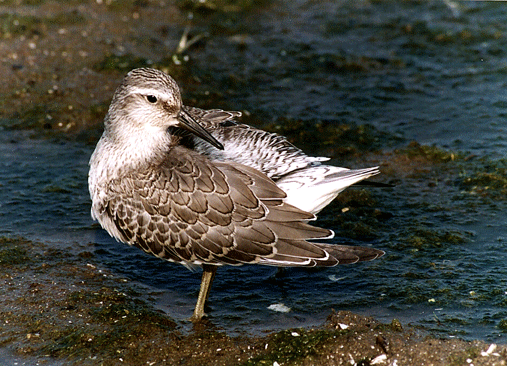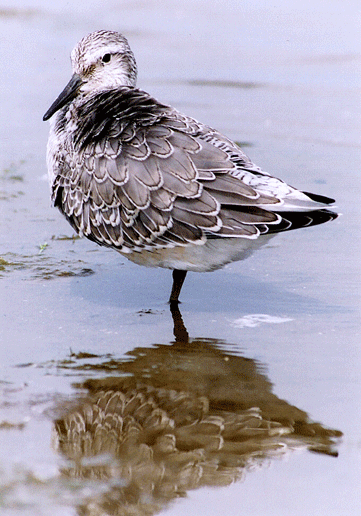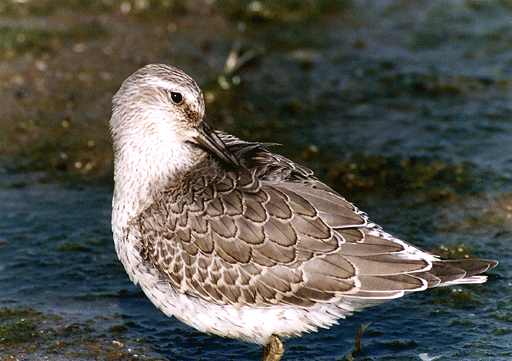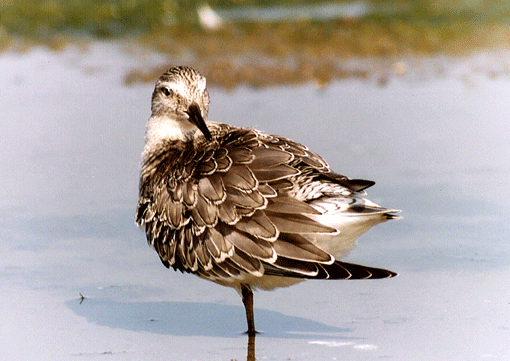Red Knot
Calidris canutus


Red Knot Calidris canutus
 One of the most colorful and largest of the “peeps” in North America, it makes one of the longest migrations of any bird, traveling 9,300 miles from its Artic breeding grounds to Tierra del Fuego in southern South America. The first known nest was found during Admiral Perry’s expedition to the North Pole in 1909 well above the Artic Circle.
One of the most colorful and largest of the “peeps” in North America, it makes one of the longest migrations of any bird, traveling 9,300 miles from its Artic breeding grounds to Tierra del Fuego in southern South America. The first known nest was found during Admiral Perry’s expedition to the North Pole in 1909 well above the Artic Circle.
 New Jersey’s Delaware Bay is a primary staging area during spring migration, where the knots feed on the eggs of spawning horseshoe crabs. When the horseshoe crabs are readily available Red Knots will nearly double their weight from 4.94 ounces to 7.76 ounces during this stop over. It is estimated that almost 90% o the entire population of the Red Knot species can be present on the bay in a single day. In recent years due to the heavy harvesting of horseshoe crabs, the knots have declined drastically. The Delaware Bay population dropped from 53,000 to 33,000 between 1998 and 2002 and the Tierra del Fuego population dropped from 56,000 to 25,000 in 2003 and as well only 16,000 were counted in Delaware Bay in 2003. It was also affected by the market hunters of the late 1800’s with huge numbers lost.
New Jersey’s Delaware Bay is a primary staging area during spring migration, where the knots feed on the eggs of spawning horseshoe crabs. When the horseshoe crabs are readily available Red Knots will nearly double their weight from 4.94 ounces to 7.76 ounces during this stop over. It is estimated that almost 90% o the entire population of the Red Knot species can be present on the bay in a single day. In recent years due to the heavy harvesting of horseshoe crabs, the knots have declined drastically. The Delaware Bay population dropped from 53,000 to 33,000 between 1998 and 2002 and the Tierra del Fuego population dropped from 56,000 to 25,000 in 2003 and as well only 16,000 were counted in Delaware Bay in 2003. It was also affected by the market hunters of the late 1800’s with huge numbers lost.




Copyright Mark Tiefenbach
Deepbrook Nature Photography
Copyright Mark Tiefenbach
Deepbrook Nature Photography
Copyright Mark Tiefenbach
Deepbrook Nature Photography
Copyright Mark Tiefenbach
Deepbrook Nature Photography
Copyright Mark Tiefenbach
Deepbrook Nature Photography
Copyright Mark Tiefenbach
Deepbrook Nature Photography





